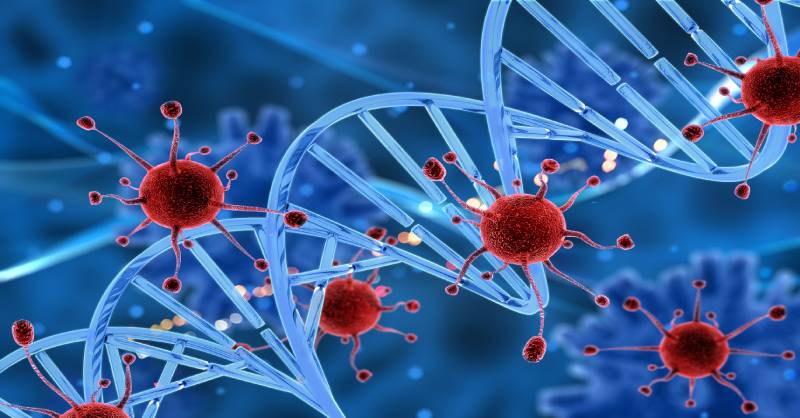The bladder is situated below the kidneys and between the hips and is a hollow organ that collects urine. Bladder cancer is treatable when detected early. Bladder cancer usually occurs in the urothelium or the inner lining of the bladder that stretches to allow for the bladder to collect urine.
Bladder cancer occurs when the urothelial cells that form the inner lining of the bladder become mutated and cause the formation of abnormal cells to form a tumor. This tumor if left untreated can first spread to lymph nodes and then to other parts of the body, even the bone or nearby organs.
Types and classifications of bladder cancer
Before exploring bladder cancer treatment, the various classifications can help identify the seriousness and possible treatments for cancer.
Transitional cell carcinoma or urothelial bladder cancer
Ninety percent of all bladder cancer cases belong to this type of bladder cancer. The cancer begins from the transitional cells of the urothelium and spread through other layers of the bladder wall like the fatty tissues surrounding the bladder. Transitional cells are special cells that allow the bladder to stretch and change form to allow the storage of urine. These cells can also be found in the kidney and ureter.
Squamous cell carcinoma
Five percent of bladder cancer are squamous cell carcinomas. This occurs when there is prolonged irritation or swelling experienced in the inner lining of the urothelium that may be caused by a chronic bladder infection. This causes the transitional cells of the inner lining to become flat and scale-like.
Adenocarcinoma and other rare forms of bladder cancer
Adenocarcinoma affect the gland cells in the lining of organs including the bladder. Small cell carcinoma or sarcomas i.e., cancer that starts in the bladder muscle are very rare forms of bladder cancer.
Classifications are based on how invasive the cancer is in and around the bladder. This can be;
Non-muscle invasive bladder cancer
Here, the cancer remains to be in the lining of the bladder and has not grown through the walls of the bladder. There are different types of non-muscle invasive types of bladder cancer.
Papillary bladder cancer: Here small growths appear from the lining of the bladder that can be removed by surgery and are most likely never to come back.
Carcinoma in situ: CIS consists of highly abnormal cancer cells that grow quickly but do not grow out of the wall of the bladder. This cancer is highly likely to come back after treatment.
High-grade T1 tumors: These grow into one layer within the bladder and can be treated when caught early.
Muscle-invasive bladder cancer
Transitional cell carcinoma is muscle-invasive. It can grow through the bladder walls. Muscle-invasive types of bladder cancer require a more aggressive approach to cancer treatment to prevent the risk of cancer spreading to other parts of the body.
Causes and precautions
There are certain risk factors that have come to be associated with bladder cancer that people may do well to take precautions to avoid. Here are some precautions that can be taken to avoid the need for bladder cancer treatment.
Cigarettes: Smoking or exposure to frequent second-hand smoke can double your risk for bladder cancer. Avoiding cigarettes completely helps avoids various types of cancers.
Exposure to harmful substances: Some chemicals like tar, coal and asphalt can increase one’s risk of bladder cancer. Precautions must be taken like safety uniforms and tools while handling such substances.
Working in factories that handle chemicals: Factories that handle dyeing, paint, plastics, and leather are found to increase the risk of bladder cancer. This too needs to be handled with care with the correct safety gear and equipment without which one increases their risk of bladder cancer exponentially.
Other cancer treatments: A cancer patient already that has undergone chemotherapy and radiotherapy can see a risk of getting bladder cancer as a late effect of treatment.
Chronic bladder infection or catheter use: Squamous cell carcinoma can be formed from frequent irritation to the lining of the bladder. This can be avoided with good hygiene and intimate care to avoid infections. Bladder cancer and bladder infections have several common symptoms - both require immediate attention so do not delay a visit to the doctor when you find abnormal symptoms while passing urine.
Symptoms of bladder cancer
Bladder cancer can be treated if diagnosed early. These are signs and symptoms of bladder cancer that can help identify possible cancer in the bladder that you need to check for.
Blood in the urine or hematuria: This may be visible to the naked eye or can be caught during routine urine tests. Women usually skip over any blood in the urine owing to menstruation.
Painful urination or dysuria: Men may experience pain during and/ or after passing urine. This could be a burning or stinging sensation when one starts or finishes peeing.
Frequent urination: More than normal or a frequent need to pass urine.
Difficulty passing urine: This refers to experiencing difficulty in passing urine. You may experience the need to put a lot of pressure to maintain flow or find that the flow is much weaker than usual.
Frequent bladder infections: Check for frequent bladder infections that do not seem to go away. It may be an early symptom of bladder cancer.
Diagnosis for bladder cancer
Bladder cancer treatment hospitals will want to rule out the possibility of the symptoms being caused by urinary infections and make sure they catch any signs of cancer.
Urine cytology: A urine sample is taken and examined under a microscope for cancerous cells.
Cystoscopy: The doctor uses a cystoscope which is a narrow tube and inserts it into the bladder through the urethra. The cystoscope has a lens through which the doctor is able to carefully examine the insides of the bladder and urethra and look for signs of cancer.
Biopsy: During cystoscopy, the doctor can pass a specific tool that can be used to collect sample cells to test.
Transurethral resection of bladder tumor: During a cystoscopy, the doctor can remove any times that may be found for additional testing and works as a treatment as well to prevent the tumor from growing through the bladder wall.
Imaging tests: Scans, x-rays, or MRIs may be used to look for the spread of cancer beyond the bladder.
Classification of cancer grades based on testing
Bladder cancer can be further classified in terms of how the cancer cells have grown called the grade of cancer.
Low-grade bladder cancer means that the cancer cells are closer in appearance and organization to normal cells. This also results in the cancer being slow to grow and the probability of the cancer spreading through the bladder wall is minimal. A high-grade bladder cancer, however, is nearly the opposite. The cancer cells appear extremely abnormal and tend to be aggressive in nature, with a high likeliness for it to grow through the walls of the bladder and spread.
Bladder cancer treatments
Bladder cancer treatment hospitals have a very specialized approach to treating bladder cancer. They may use more than a single method of bladder cancer treatment depending on the severity of the case and the age of the patient.
Bladder cancer surgery
Bladder cancer treatment through surgery looks to surgically remove the cancerous cells. Transurethral resection of bladder tumor: As mentioned before, this method removes the tumor that remains within the inner lining of the bladder. This is a non-invasive procedure since it is performed through the cystoscope through the urethra.
Cystectomy: This procedure is used for a more aggressive cancer where the bladder needs to be partially or fully removed. Partial removal of the bladder is required in the case of a single aggressive tumor. But in some cases, the cancer may have spread further around the bladder as well and requires surrounding organs also to be surgically removed. This could be the prostate for men and the ovaries and uterus for women. This is followed by neobladder reconstruction where a small part of the intestine is used to create a new path for the urine to leave the body. There may be other procedures that your doctor will discuss to provide alternate ways to allow urination.
Chemotherapy
As with any other cancer treatment, bladder cancer treatment also uses chemotherapy where one or more drugs are used to kill the cancer. The difference here is a bladder cancer treatment hospital has a different method to approach chemotherapy when it comes to bladder cancer treatment. The first way is the regular method where the drug is administered intravenously. The other method is to administer the drug directly into the bladder which is called intravesical therapy. Here the drug is administered through a tube taken through the urethra to the bladder. Here the drug is left in the bladder for a certain amount of time before it is drained. This method is especially used when the cancer is located within the inner lining of the bladder alone.
Immunotherapy also is administered in a similar way - the regular approach intravenously or directly into the bladder in the case of bladder cancer treatment.
Other bladder cancer treatments
Radiation therapy uses powerful X-rays to kill cancerous cells. As with any other cancer, radiotherapy is usually used in combination with chemotherapy and is targeted at precise points of the body to kill bladder cancer.
If you are concerned about bladder cancer treatment, make an appointment with a reputable team of oncologists at the state-of-the-art facility at Park Group of Hospitals. With the combined experience of over 30 years and the latest technology for cancer treatment, you can understand the various options you have for treatment.
Conclusion
Bladder cancer is generally cancer occurring in the inner lining of the bladder that may or may not spread through the bladder wall. Symptoms of bladder cancer closely match the symptoms of bladder infections. An increasingly recurring bladder infection may need to be investigated further for cancer. There are several options for bladder cancer treatment when the disease is diagnosed early. Bladder cancer treatment hospitals are adept at providing specific treatments like cystectomy, transurethral resection of bladder tumors and intravesical therapy.
FAQs
Is bladder cancer treatable?
Bladder cancer treatment can prove to be very effective when treatment is administered early on in the progress of bladder cancer before it spreads.
How is bladder cancer diagnosed?
A doctor may conduct a cystoscopy to examine the inner lining of the bladder, or urinalysis to examine urine for cancerous cells, or may take a biopsy of the lining of the bladder. These tests can help diagnose bladder cancer.
Is painful urination a symptom of bladder cancer?
Pain during or after urination is one of the symptoms that both bladder cancer and bladder infections share. Painful urination alone does not mean that a person has cancer.
What are some precautions against bladder cancer?
Avoid smoking and take safety precautions if you work in factories that deal with chemicals. This includes wearing safety gear and masks. The same goes for any regular handling of substances like coal and tar. Frequent bladder infections can also lead to bladder cancer so ensure any infection is treated at the earliest.






































